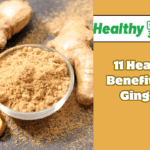10 REMEDIES TO GET RID OF HEADACHES NATURALLY
1. Staying Hydrated helps in relieving headache
Staying hydrated is crucial for overall health, and it can indeed play a significant role in relieving headaches for many individuals. Dehydration is a common trigger for headaches, as it can lead to changes in blood volume and electrolyte balance, which may affect blood flow to the brain and contribute to discomfort.
By ensuring adequate hydration, individuals can help maintain proper blood flow and hydration levels, potentially alleviating headache symptoms. Additionally, drinking water can help flush out toxins and waste products from the body, which may further reduce headache intensity or frequency. While hydration alone may not eliminate all headache triggers, it is an essential factor in headache management and prevention.
Therefore, staying hydrated by drinking water throughout the day is a simple yet effective way to support overall health and potentially reduce the occurrence or severity of headaches.
Read Also:
Focus While Studying: 10 Proven Methods
2. Essential oils reduce headache
Essential oils have gained popularity for their potential to reduce headaches and provide relief from discomfort. Certain essential oils, such as peppermint, lavender, and eucalyptus, contain compounds that possess analgesic and anti-inflammatory properties, which can help alleviate headache symptoms.
Peppermint oil, for example, contains menthol, which has been shown to relax muscles and improve blood flow, potentially easing tension headaches. Lavender oil is known for its calming and soothing effects, which can help reduce stress and anxiety, common triggers for headaches.
Eucalyptus oil, with its cooling sensation, may also provide relief from sinus headaches by opening up nasal passages and promoting easier breathing. When used properly, such as through inhalation or diluted application to the skin, these essential oils can offer a natural and holistic approach to managing headache symptoms.

3. Cold compression relieves headache
Cold compression is a popular and effective method for relieving headaches, particularly those associated with tension or migraine. Applying a cold compress to the affected area can help constrict blood vessels, reduce inflammation, and numb the pain receptors, providing relief from headache symptoms.
The cold sensation also has a numbing effect, which can help dull the sensation of pain and alleviate discomfort. Cold compression is especially beneficial for migraine headaches, as it can help reduce the severity and duration of migraine attacks. Additionally, cold compression is a safe and non-invasive treatment option that can be easily administered at home.
However, it’s essential to use caution when applying cold compresses to sensitive areas, such as the temples or forehead, and to limit the duration of application to prevent skin damage or discomfort. Overall, cold compression is a simple and effective method for managing headaches and can offer quick relief for many individuals.
Read Also:
4. Warm compression reduces headache
Warm compression is another effective method for reducing headache symptoms, particularly those associated with tension or stress. Applying a warm compress to the affected area can help relax muscles, improve blood circulation, and alleviate tension, providing relief from headache discomfort.
The warmth also has a soothing effect, which can help promote relaxation and ease headache-related stress or anxiety. Warm compression is particularly beneficial for tension headaches, as it can help relieve muscle tightness and stiffness in the neck and shoulders, which are common triggers for this type of headache.
Warm compression can help alleviate sinus headaches by promoting drainage and relieving congestion in the nasal passages. Like cold compression, warm compression is a safe and non-invasive treatment option that can be easily administered at home.
5. Headache can be reduced by Massage
Massage therapy is a widely recognized and effective method for reducing headache symptoms and providing relief from discomfort. By applying gentle pressure and kneading motions to specific areas of the head, neck, and shoulders, massage can help relax tense muscles, improve blood circulation, and alleviate tension, which are common triggers for headaches.
Additionally, massage promotes the release of endorphins, which are natural pain-relieving chemicals produced by the body, further contributing to headache relief. Certain massage techniques, such as acupressure or trigger point therapy, can target specific headache trigger points and provide targeted relief.
Moreover, massage therapy offers psychological benefits by promoting relaxation, reducing stress, and improving overall well-being, which can also help alleviate headache symptoms. While massage therapy can offer immediate relief for some individuals, it may require regular sessions to effectively manage chronic headache conditions.
6. Intake of Magnesium helps with headache
The intake of magnesium has been found to be beneficial in managing and preventing headaches, particularly migraine headaches. Magnesium plays a crucial role in various physiological processes, including nerve function, muscle contraction, and blood vessel regulation, all of which are implicated in the development of headaches.
Research suggests that individuals with migraine headaches often have lower levels of magnesium in their bodies, and supplementation with magnesium can help alleviate symptoms and reduce the frequency and severity of migraine attacks.
Additionally, magnesium has been shown to have a calming effect on the nervous system, which can help reduce stress and anxiety, common triggers for headaches.

7. Ginger reduces headache
Ginger has long been recognized for its potential to reduce headache symptoms and provide relief from discomfort. This root contains several bioactive compounds, including gingerol, which possesses anti-inflammatory and analgesic properties that may help alleviate headache symptoms.
Ginger is believed to work by inhibiting the production of inflammatory substances in the body and blocking the transmission of pain signals to the brain. Studies have shown that ginger may be particularly effective in relieving migraine headaches, with some research suggesting that it can reduce the severity and duration of migraine attacks.
Ginger has a calming effect on the stomach and can help alleviate nausea and vomiting, which are common symptoms associated with migraines. Ginger can be consumed in various forms, including fresh ginger root, ginger tea, ginger capsules, or as an ingredient in cooking and baking.
8. Herbal tea relieves headache
Herbal tea is often hailed for its soothing properties and has been found to provide relief from headaches for many individuals. Certain herbal teas, such as peppermint, chamomile, and ginger tea, contain compounds with anti-inflammatory and analgesic properties that can help alleviate headache symptoms.
Peppermint tea, for example, contains menthol, which can help relax muscles and ease tension headaches. Chamomile tea has calming effects that can help reduce stress and anxiety, common triggers for headaches.
Ginger tea, as mentioned earlier, contains gingerol, which possesses anti-inflammatory properties that may help relieve headache discomfort. Additionally, herbal teas are hydrating and can help promote relaxation and overall well-being, which can further aid in headache relief.
Read Also:
11 Best Ways to Improve Your Digestion
9. Acupressure helps alleviate headache
Acupressure is a technique that involves applying pressure to specific points on the body to relieve pain and promote overall well-being, and it has been found to be effective in alleviating headache symptoms for many individuals.
By targeting specific pressure points, such as those located on the hands, feet, and head, acupressure can help release tension, improve blood circulation, and reduce headache discomfort. One commonly targeted pressure point for headache relief is the “Third Eye” point, located between the eyebrows on the forehead.
Applying gentle pressure to this point for several minutes can help alleviate headache symptoms, particularly those associated with tension headaches. Additionally, acupressure may stimulate the release of endorphins, the body’s natural pain-relieving chemicals, which can further contribute to headache relief.
10. Relaxation techniques reduce headache
Relaxation techniques are widely recognized for their effectiveness in reducing headache symptoms and providing relief from discomfort. Techniques such as deep breathing exercises, progressive muscle relaxation, guided imagery, and mindfulness meditation can help promote relaxation and alleviate tension, which are common triggers for headaches.
Deep breathing exercises, for example, can help calm the nervous system, reduce stress, and improve oxygen flow to the brain, which can help alleviate headache symptoms. Progressive muscle relaxation involves tensing and then relaxing different muscle groups in the body, helping to release tension and promote overall relaxation.
Guided imagery and mindfulness meditation techniques focus on directing attention to calming and pleasant mental images or sensations, helping to reduce stress and promote a sense of calmness. By incorporating these relaxation techniques into daily routines, individuals can effectively manage headache symptoms and improve overall well-being.





